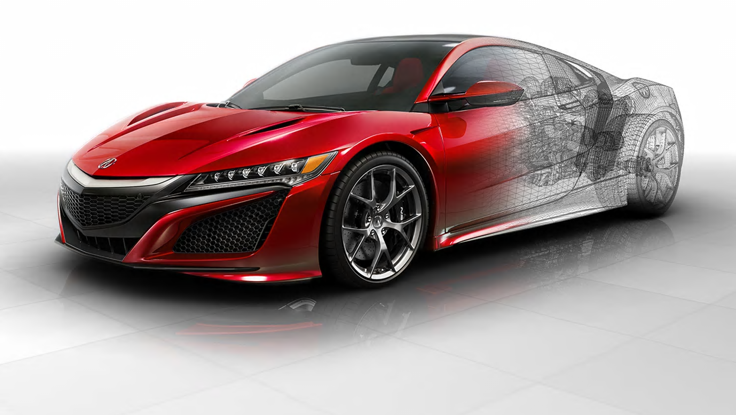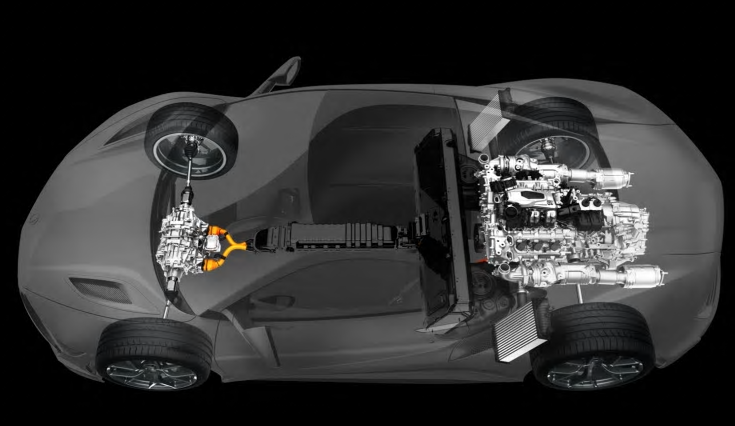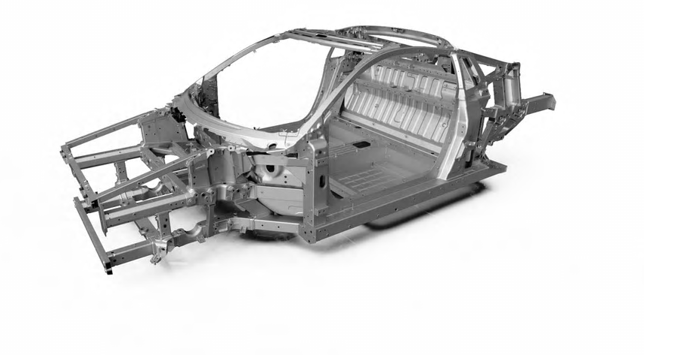2nd Generation NSX Technical Details Revealed
August 13 2019, Markham Acura

Key Highlights
New details regarding the new generation Acura NSX (Honda NSX in other select markets) were revealed at the SAE 2015 World Congress and Exhibition in Detroit. Such innovative components developed by the engineering team help further push the NSX to the "New Sports Experience" to the next level.
- Mutli-Material Body with Space Frame Construction
- Ablation Casting
- 3D formed, ultra-high-strength steel A-Pillar Construction
- Total Airflow Management
- Sport-Hybrid Super Handling All-Wheel Drive (and Power Unit)
Multi-Material Body
The original Acura NSX was known for its signature all-aluminum body and chassis. This iteration of the NSX will also include multi-material space frame, exclusive to Acura within the automotive market, which significantly push the boundaries to become the most rigid in its competitive class while retaining its lightweight and agile figure.
Ablation Casting
Ablation casting is the application of traditional casting in addition to rapid cooling techniques immediately to offer design flexibility, rigidity of casting with ductility, and energy absorption characteristics of extruded material. The new-generation NSX is the first in the world to apply ablation casting technology in the automotive industry with no-compromise performance goal in mind, especially in crush zone areas where traditional castings would have been brittle.
New A-Pillar Construction Technique
The A-Pillar is one third of the side frame pillar that begins from the side mirrors before it reaches the roofline area and descends. The NSX further increase rigidity and attain precise shape specification tolerances by also applying an 3D formed ultra-high-strength steel A-Pillar.
Total Airflow Management
A supercar of such calibre requires extensive air flow and aerodynamics in order to reach its peak efficiency. The NSX's new airflow management strategy supports component cooling, aerodynamic performance (drag and downforce) at a very high level while also complimenting the dynamic styling as shown on the front and rear fenders. This would be achieved by the 10 air-cooled heat exchangers utilized for dedicated cool in the front twin-motor unit (TMU), twin-turbo V6 engine, rear direct-drive electric motor and 9-speed dual clutch transmission (DCT). Additionally, three specialized radiators will be used to cool down the all new, twin-turbocharged 3.5-litre V6 engine - one radiator in the centre and two side-units to maximize airflow volume and efficiency. A condenser and power drive unit (PDU) coolers are packaged in front of the centre engine radiator while the twin-motor unit is cooled passively through strategic use of air in the front motor room and by a heat exchanger mounted in the front of the right sub-radiator. Furthermore, the 9-speed dual-clutch transmission is cooled by two heat exchangers, on mounted in front of the left engine sub-radiator and the other in the engine compartment while twin-intercoolers located in the signature side intakes are utilized to cool the intake air charge. As you can see, the new NSX does emit quite a bit of heat - can you handle it?
Sport-Hybrid Super-Handling All-Wheel Drive
The current iteration of the dynamic torque vectoring technology found in the Sport Hybrid SH-AWD represents research and development two decades in the making. The Super-Handling All-Wheel Drive technology was first introduced on the 2005 Acura RL (or Honda Legend in other markets) and later pushed out into other Acura models such as 2007-2012 RDX, 2007+ MDX, and 2009-2014 TL. This all-new Sport Hybrid represents a system injected with more electric power, delivered more directly, managing more internal combustion power than any system Acura has engineered to date. Super Handling is brought to its pinnacle form in NSX where the strengths of electric motors -delivering zero delay acceleration - allows the NSX to offer dynamic torque vectoring even at low vehicle and engine speeds. Super Handling logic has progressed along a parallel path with hardware. While many advanced automotive technologies are focused on feedback, measurements of how the vehicle is reacting, NSX uniquely applies additional technology to focus on accurately responding to driver input through immediate, precise application of torque at each wheel at any moment. Using cutting edge computer-aided engineering (CAE) optimization software, engineers created a double-wishbone, double lower control arm front suspension that decouples the twin-motor unit (TMU) torque from the driver's experience at the steering wheel, providing timeless sports car steering communication to the driver with a new experience of on rails handling provided by the precise torque vectoring of the TMU. Variable gear ratio steering is applied to further enhance the confident, race-ready driving dynamics of the all-new NSX. The end result is in parallel to the development team's 'human-centered supercar' concept, the new NSX and its Sport Hybrid Super Handling drivetrain were truly engineered from the driver out.



